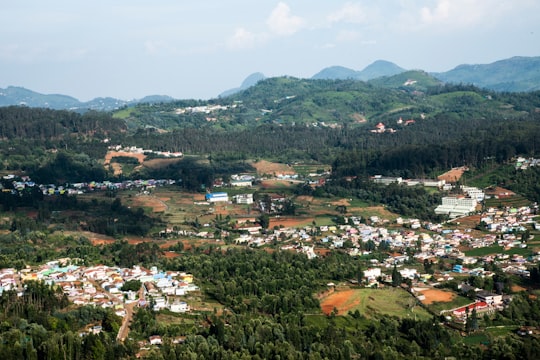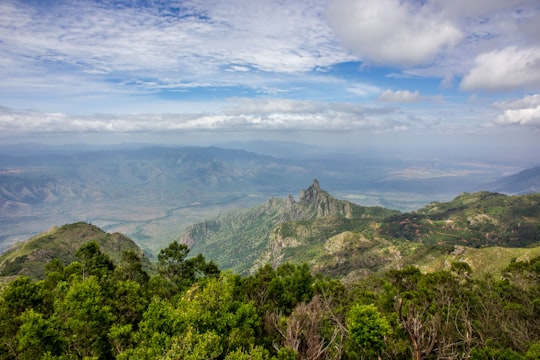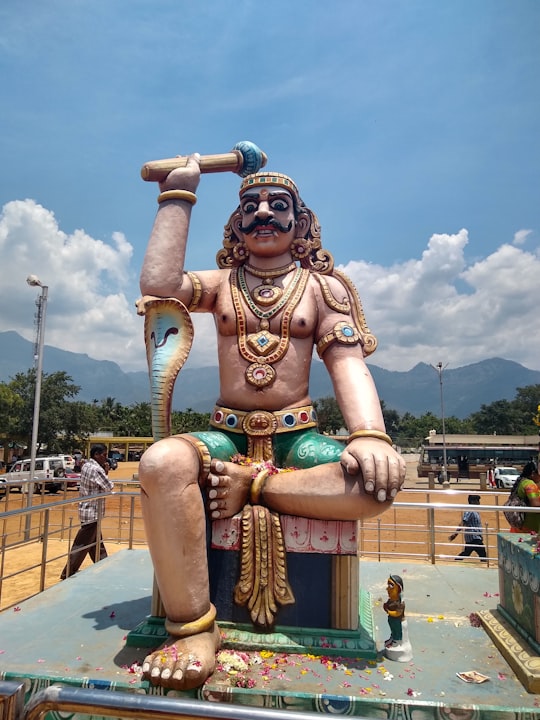Travel Guide of Naduvattam in India by Influencers and Travelers
Naduvattam is a Panchayat town in The Nilgiris district in the Indian state of Tamil Nadu. It is located on Coimbatore-Gundalpet National Highway NH 67 of the Nilgiri Ghat Roads.
The Best Things to Do and Visit in Naduvattam
TRAVELERS TOP 7 :
1 - Mudumalai National Park
10 km away
Arignar Anna Zoological Park, also known as the Vandalur Zoo, is a zoological garden located in Vandalur, is in the southwestern part of Chennai, Tamil Nadu, about 31 kilometres from the Chennai Central and 15 kilometres from Chennai Airport.
Learn more Book this experience
2 - Ooty
16 km away
Ooty, officially known as Udhagamandalam, is a city and a municipality in the Nilgiris district of the South Indian state of Tamil Nadu.
Learn more

3 - Lovedale
18 km away
Learn more

4 - Bandipur
22 km away
Learn more

5 - Kotagiri
33 km away
Kotagiri or Kothagiri is a taluk and a Panchayat town in The Nilgiris District in the Indian state of Tamil Nadu. It is the third largest hill station in the Nilgiri hills. Kotagiri is located at 11.43°N 76.88°E. It has an average elevation of 1,847 m.
Learn more
6 - Kodanad
37 km away
Kodanad is a rural riverside village of Ernakulam district in Kerala, South India. It is 18 km from Angamaly. Kodanad is situated on the south bank of Periyar river, about 42 kilometers east of Kochi.
Learn more
7 - Sri Vana Badra Kali Amman Temple
41 km away
Learn more

Disover the best Instagram Spots around Naduvattam here
Book Tours and Activities in Naduvattam
Discover the best tours and activities around Naduvattam, India and book your travel experience today with our booking partners
Pictures and Stories of Naduvattam from Influencers
Picture from Sakthi M who have traveled to Naduvattam
Plan your trip in Naduvattam with AI 🤖 🗺
Roadtrips.ai is a AI powered trip planner that you can use to generate a customized trip itinerary for any destination in India in just one clickJust write your activities preferences, budget and number of days travelling and our artificial intelligence will do the rest for you
👉 Use the AI Trip Planner
Why should you visit Naduvattam ?
Travel to Naduvattam if you like:
⛰️ HillLearn More about Naduvattam
It's one of the most striking of the Thames bridges, and definitely one of our favourites. Here's everything you need to know about the Millennium Bridge. 1. It's a winner The Millennium Bridge was the result of a 1996 competition held by Southwark Council in conjunction with the Financial Times and the Royal Institute of British Architects. The call, for a new bridge across the Thames, was won by the 'blade of light' design envisioned by Arup (engineers), Foster and Partners (architects) and Sir Anthony Caro (sculptor). The bridge as seen from St Paul's Cathedral. Photo via wikicommons. 2. It's pretty unique The Millennium Bridge was the first new bridge to be built over the Thames in London for more than 100 years. Usually, all new bridges across the Thames require an Act of Parliament to be passed. For the Millennium Bridge, that need was avoided: instead the Port of London Authority granted a licence for the structure, obtaining planning permissions from the City of London and London Borough of Southwark. 3. Vital statistics The bridge has two river piers and is made of three main sections of 81 metres (266ft), 144 metres (472ft) and 108 metres (354ft) (north to south) with a total structure length of 325 metres (1,066ft). Underneath the Millennium Bridge. Photo via wikicommons. The aluminium deck is four metres (13ft) wide. 4. It's had not one, but two openings The Millennium Bridge officially opened by the Queen on 10 June 2000, two months later than originally planned. Two days later, on 12 June 2000, it was closed again. It then reopened - this time for good - on 27 February 2002. 5. It was nicknamed the Wobbly Bridge, and here's the science behind why Its official title is the London Millennium Footbridge. But no-one calls it that. Instead, it'll probably always be called the Wobbly Bridge. Built using 'lateral suspension', an engineering innovation allowing suspension bridges to be built without tall supporting columns, the Thames' newest crossing was hit by a phenomenon called Synchronous Lateral Excitation when loads of people flooded over its shiny new deck. Around 80,000 people crossed the bridge on its opening day, with around 2,000 on the bridge at any one time. Those on the southern and central spans felt the bridge begin to sway and twist in regular oscillations. Feeling unsteady, the pedestrians altered their gait to the same lateral rhythm as the bridge. The adjusted footsteps just magnified the motion: the more it happened, the more people responded to the movement; and the worse it got. While there was no chance that the bridge actually would fall down, engineers felt that the wobble needed to be stopped. In the end, the problem was fixed with two different types of damper: viscous dampers (like car shock absorbers); and tuned mass dampers: a large mass stiffened by springs, sometimes used in buildings in earthquake zones.
Where to Stay in Naduvattam
Discover the best hotels around Naduvattam, India and book your stay today with our booking partner booking.com
More Travel spots to explore around Naduvattam
Click on the pictures to learn more about the places and to get directions
Discover more travel spots to explore around Naduvattam
⛰️ Hill spotsTravel map of Naduvattam
Explore popular touristic places around Naduvattam
